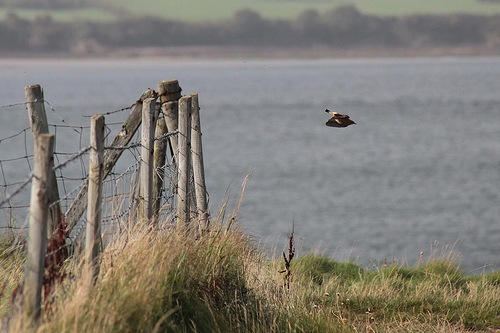Note: Thanks to GrrlScientist for using this post on her Guardian Science blog, thereby quadrupling my daily readership count to at least four.
Lapwing, dipper, swallow, robin, curlew…
I've never drawn up a list of my top ten birds, but wheatears would very likely be on it.

They're such smart creatures. Smart as in neat and well-groomed, I mean; I can't comment on their intelligence. And it's always a real treat to see one, because you're usually on a nice walk somewhere in the hills or near the coast, kind of hoping you might spot the white flash of a wheatear's rump.
I remember my first wheatear. I was a young boy. My parents had taken my sister and me for a walk near the seashore at Thurstaston on the Wirral. My mum, who was entirely responsible for my love of the natural world, pointed out the elegant bird on a nearby fence-post, explaining that it was called a wheatear because of the light stripe running above its eye and behind its ear. The stripe, she explained, was supposed to look like an ear of wheat. It's a lovely reason for a lovely name.
It's also total bollocks.
Years later, I found out where wheatears really got their name. It was on account of their distinctive white rumps: wheat-ears is apparently a corruption of white-arse!

I told my mum, of course. She claimed to be shocked, but I could tell she was secretly delighted.